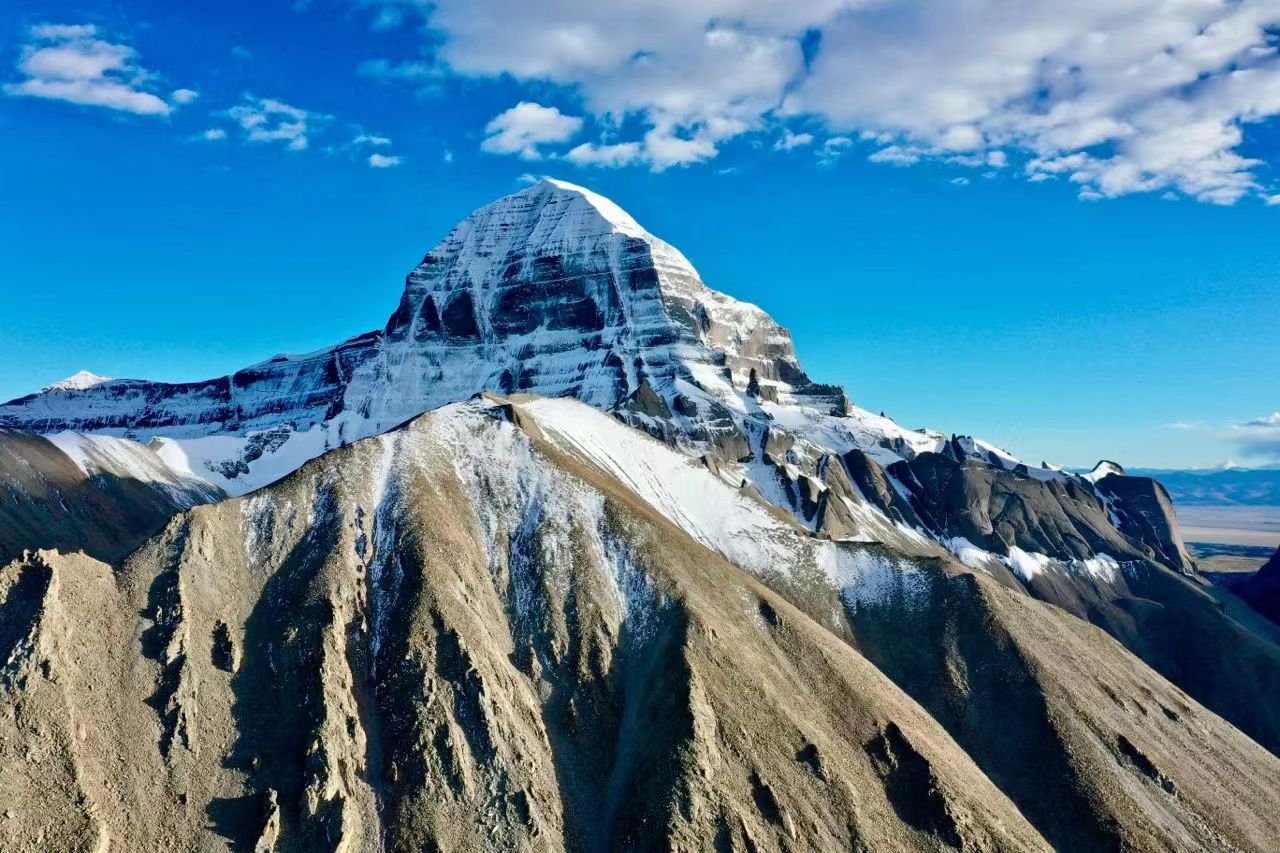Nestled in the heart of the Himalayas, the sacred Mount Kailash stands tall and majestic, beckoning pilgrims and adventure seekers alike. The Kailash Mansarovar Yatra is a spiritual journey that holds profound significance for Hindus, Buddhists, Jains, and Bonpos. This annual pilgrimage takes participants on an arduous but spiritually enriching trek around Mount Kailash, accompanied by a visit to the pristine Lake Mansarovar. In this article, we delve into the rich tapestry of the Kailash Mansarovar Yatra, exploring its cultural, religious, and geographical importance.
Geographical Marvel:
Mount Kailash, standing at an elevation of 6,638 meters (21,778 feet), is not just a mountain; it is believed to be the abode of Lord Shiva in Hinduism. The conical shape of the mountain, its snow-capped peak, and the challenging terrain contribute to the aura of mysticism that surrounds it. The Mansarovar Lake, located at the southern base of Mount Kailash, is one of the highest freshwater lakes in the world, adding to the natural grandeur of the pilgrimage.
Religious Significance:
For Hindus, Mount Kailash is considered the dwelling place of Lord Shiva, the destroyer and transformer in the Holy Trinity. Buddhists associate the mountain with Guru Rinpoche (Padmasambhava), the founder of Tibetan Buddhism, while Jains believe it to be the site where the first Tirthankara attained enlightenment. The Bonpos, adherents of the pre-Buddhist Bon religion, also revere Kailash as a sacred site. The convergence of these beliefs has turned the Kailash Mansarovar Yatra into a symbol of unity among diverse religious traditions.
The Pilgrimage Route:
The Kailash Mansarovar Yatra typically begins in the town of Darchen, located in the Tibetan Autonomous Region of China. Pilgrims embark on a challenging trek around Mount Kailash, known as the Kora or Parikrama, covering a distance of approximately 52 kilometers. The journey takes participants through rugged terrains, high-altitude passes, and breathtaking landscapes. Pilgrims perform rituals, chants, and prayers along the way, seeking spiritual enlightenment and blessings.
Dip in Mansarovar:
A significant highlight of the yatra is the ritualistic dip in Lake Mansarovar, believed to cleanse the soul of sins and purify the mind. Pilgrims circumambulate the lake, offering prayers and immersing themselves in its sacred waters. The serene ambiance and pristine surroundings contribute to the spiritual experience, making it a deeply transformative and introspective journey.
Challenges and Preparations:
The Kailash Mansarovar Yatra is not for the faint-hearted. The high altitude, extreme weather conditions, and rugged terrain pose physical challenges, demanding a good level of fitness and acclimatization. Pilgrims often undertake thorough preparations, both physically and spiritually, to ensure a safe and meaningful journey. Despite the difficulties, the sense of accomplishment and the spiritual rewards make the hardships worthwhile.
Conclusion:
The Kailash Mansarovar Yatra is a pilgrimage like no other, offering a unique blend of spiritual exploration and physical endurance. Beyond the geographical marvels and challenging terrains, it is a journey that connects people with their faith, fostering a sense of unity and shared reverence for the sacred. Whether driven by religious devotion or a quest for self-discovery, those who undertake this pilgrimage find themselves forever changed by the awe-inspiring beauty and spiritual energy that envelop Mount Kailash and Lake Mansarovar.




